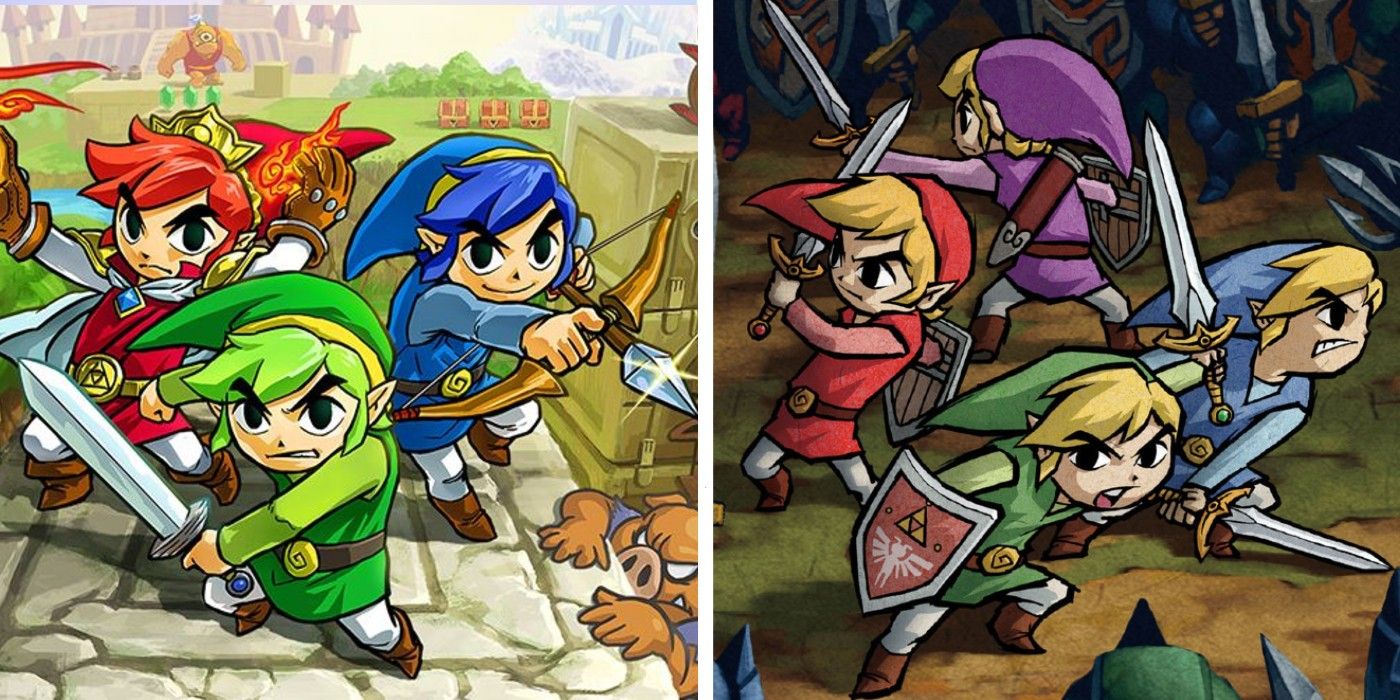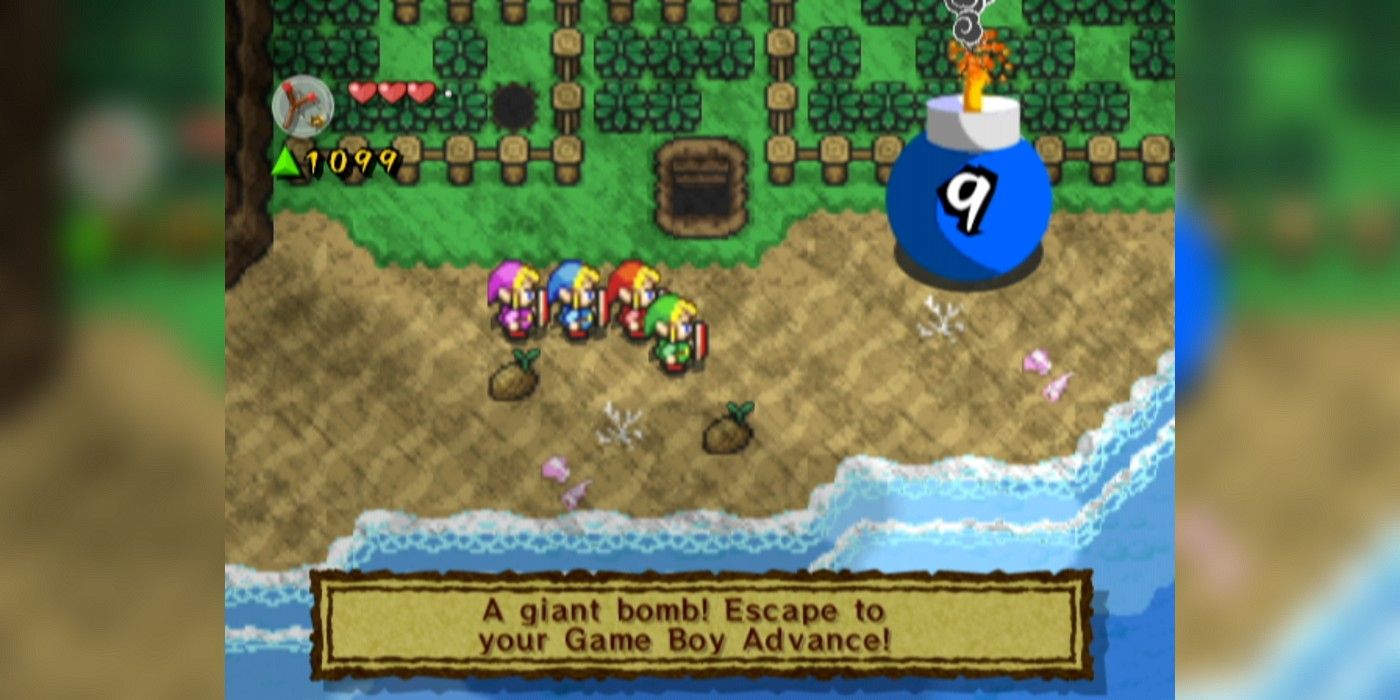Ever since classic multiplayer titles like Mario Kart 64 and GoldenEye 007 released on the N64, Nintendo has reigned supreme as the ultimate couch co-op game developer. So many of Nintendo's biggest series, like Super Smash Bros. and Pokémon, heavily revolve around multiplayer, but the main outlier in this trend is The Legend of Zelda. It's easily one of the studio's most popular single-player franchises, but there are a handful of games in its lineup with substantial multiplayer modes. However, The Legend of Zelda's multiplayer games are frequently considered some of the worst in the series, which is a shame, given they offer unique experiences that can't be found elsewhere.
The first multiplayer Zelda title was A Link to The Past & Four Swords on the Game Boy Advance. At first glance, the game seems to be a simple port of A Link to the Past, but Four Swords was added to the package as a new multiplayer mode. This worked by linking multiple GBA systems together so that everyone had their own screen and controller. Later, on the multiplayer-centric GameCube, fans were treated to Four Swords Adventures, a full-length game that focused on refining the core concept of the previous Four Swords game. In this version, players connected GBAs to the GameCube, allowing the handhelds to be used as controllers and "second screens."
Setting all of this up is inconvenient, to say the least, which may explain the multiplayer Zelda games' lack of popularity. Even back in the day, when these devices and games were still readily available, it was expensive to acquire all the necessary pieces to get the games running, since both required specialized cables and at least one GBA per player. Furthermore, the original Four Swords was multiplayer-only, and Four Swords Adventures was much better with friends than alone.
What Makes Multiplayer Zelda Games Unique
Four Swords and Four Swords Adventures might be obnoxious to set up, but once it happens, the result is unlike any other Zelda title. They each offer a mission-based structure and take advantage of every player having their own screen. Four Swords Adventures offered players asymmetric multiplayer before the Wii U and, ironically, did it better than most Wii U games. Some sequences required players to look from the GBA screen to the TV in order to coordinate certain actions, like lining up an arrow from the Game Boy to the TV. The Nintendo 3DS's Tri Force Heroes, another multiplayer Zelda game, only supported three players, but its clothing system allowed for each member of the team to fulfill different roles, making for a dynamic co-op experience. A common complaint is that Tri Force Heroes' title's plot is too goofy, but, in many ways, that's part of what makes it so charming. Not every Zelda needs to be a gritty, hardcore experience.
Both Four Swords Adventures and Tri Force Heroes also allowed players to duke it out in free-for-all battles, which were hectic and enjoyable to mess around with - small additions that offered players something to do if they grew tired of the main game. All of these multiplayer Zelda games were enjoyable, Zelda-themed romps, filled with dungeons, puzzles, and monsters to battle. They might be segmented into levels like a Mario game instead of all part of an interconnected world, but that doesn't detract from their strengths. When played with a squad of Zelda fans, The Legend of Zelda's multiplayer titles can truly be just as fun and enjoyable as other multiplayer Nintendo games.


